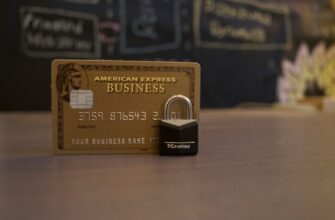In the high-stakes world of cryptocurrency, losing access to your digital assets can mean irreversible financial devastation. Air-gapped wallets – offline storage solutions disconnected from the internet – offer superior protection against remote hacks. Yet without proper backups, these fortresses become ticking time bombs. This guide details critical air-gapped wallet backup best practices to ensure your crypto remains perpetually secure and recoverable.
## Why Air-Gapped Wallet Backups Are Non-Negotiable
Air-gapped wallets (hardware devices or paper wallets) block online threats by design. However, they’re vulnerable to:
– Physical damage (fire, water, wear)
– Loss or misplacement
– Human error in setup or transcription
– Natural disasters
Without backups, a single point of failure could permanently erase your crypto holdings. Robust backups transform your air-gapped solution from fragile to fault-tolerant.
## 7 Air-Gapped Wallet Backup Best Practices
### 1. Embrace Redundant Multi-Location Storage
Never rely on a single backup copy. Create at least three identical backups stored in geographically separate, secure locations:
– Home safe (fireproof/waterproof)
– Bank safety deposit box
– Trusted relative’s secure location
This ensures survival against localized disasters.
### 2. Use Encrypted Metal Backups for Seed Phrases
Paper burns; metal endures. Etch your 12-24 word recovery seed onto:
– Stainless steel plates
– Titanium crypto capsules
– Specialty engraving tools
Encrypt with a passphrase (BIP39) for two-factor recovery – requiring both the metal backup AND a memorized password.
### 3. Implement Shamir’s Secret Sharing (SSS)
Split your seed phrase using cryptographic schemes:
– Divide into 5 “shares”
– Require 3 shares to reconstruct
– Distribute shares to trusted parties
This prevents single-point compromise while enabling recovery.
### 4. Maintain Absolute Physical Security
Store backups in tamper-evident containers:
– Sealed envelopes with signatures
– Locked safes with unique codes
– Hidden compartments
Never store digital photos, cloud copies, or typed documents – these create online attack vectors.
### 5. Conduct Bi-Annual Recovery Drills
Test backups every 6 months:
1. Use a clean, offline device
2. Input seed phrase from one backup
3. Verify wallet balance and transaction capability
4. Wipe device immediately after
This confirms accessibility without exposing keys online.
### 6. Update Backups After Major Wallet Changes
Immediately create new backups when:
– Adding new cryptocurrencies
– Changing wallet software/firmware
– Generating new addresses
– Modifying passphrases
Outdated backups risk partial or total irrecoverability.
### 7. Establish a Clear Inheritance Protocol
Ensure loved ones can access assets if you’re incapacitated:
– Store instructions in sealed envelopes
– Use multi-sig setups requiring family + lawyer
– Include wallet types, backup locations, and decryption clues
## Air-Gapped Backup FAQ Section
### Q: How often should I test my air-gapped backups?
A: Test every 6 months using an offline device. Immediately destroy any temporary devices used for verification.
### Q: Can I store encrypted digital backups for convenience?
A: Only if air-gapped: Use encrypted USB drives stored in physical safes – NEVER in cloud storage or internet-connected devices.
### Q: What’s more secure: paper or metal backups?
A: Metal backups (stainless steel/titanium) are superior. They withstand fire (1,500°F+), water, and corrosion that destroy paper.
### Q: Should I split my seed phrase across locations?
A: Yes, using Shamir’s Secret Sharing. Splitting manually (first 12 words in one place, last 12 in another) creates critical vulnerability.
### Q: How do I back up multi-currency wallets?
A: Confirm all assets use the same recovery seed. If not, create separate backups for each seed. Verify compatibility during recovery drills.
## Final Security Reminders
Air-gapped wallets only protect if backups are immutable and accessible. Combine metal engraving, geographic redundancy, and cryptographic sharing to create a disaster-proof system. Remember: Your crypto security chain is only as strong as its backup strategy. Implement these practices immediately – before the unthinkable happens.








